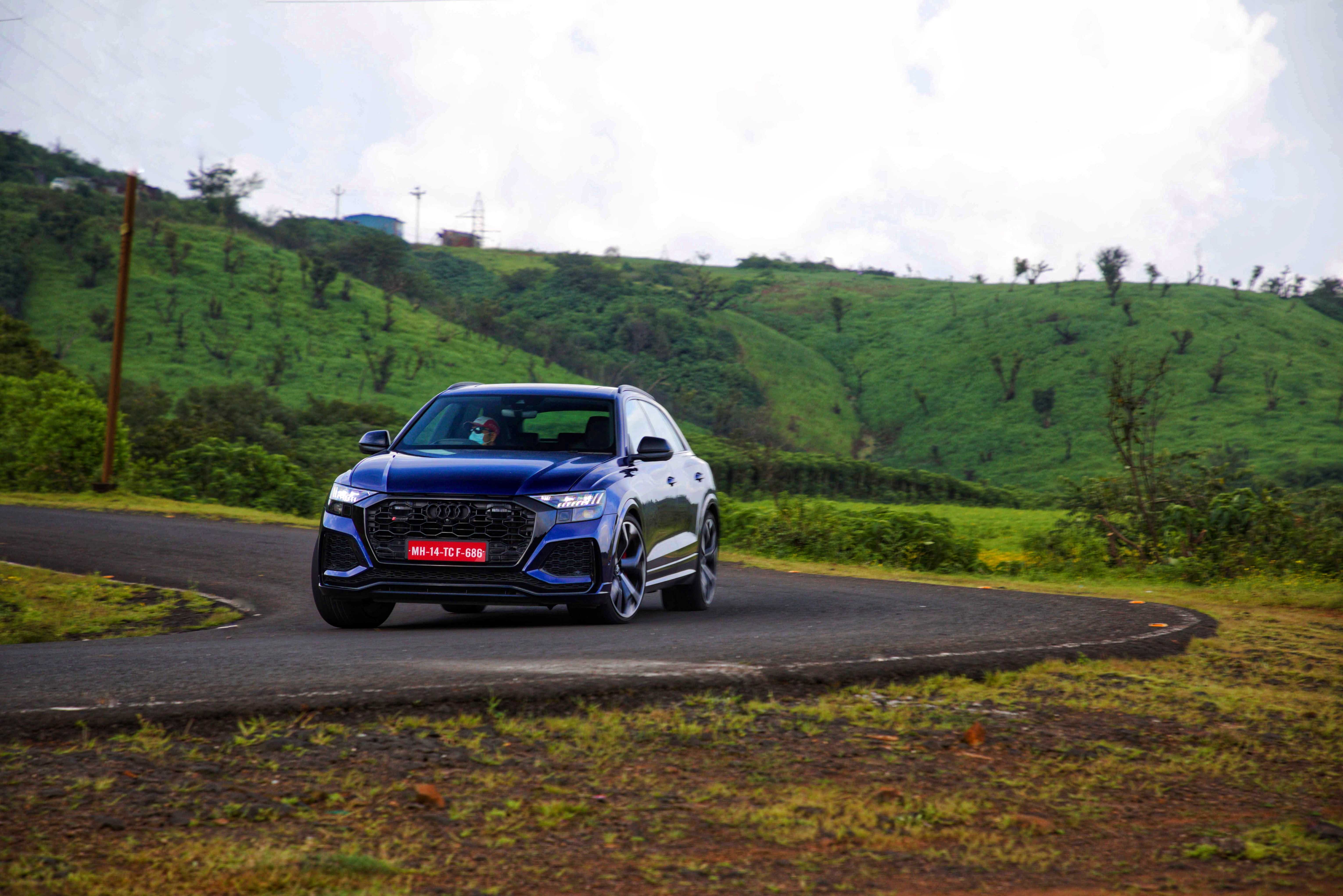Audi RS Q8 | What makes it so entertaining?
With modern techno-wizardry, heavy SUVs these days pack physics defying performance and handling, and the Audi RS Q8 encapsulates it all perfectly
 Unnatural cornering abilities of the Audi RS Q8
Unnatural cornering abilities of the Audi RS Q8There was a time when enthusiasts liked their cars low, lightweight and naturally agile. What’s happening today, especially when it comes to SUVs is quite the opposite. The fandom for cars on stilts has grown exponentially and by no means are modern SUVs light or naturally agile. Take the Audi RS Q8 for instance. It weighs 2.3 tons and in flesh, it is mahoosive. More mass demands a more powerful engine and affects handling. But thanks to modern technologies, carmakers have managed to mask this heft, making their flagship SUVs unnaturally light on their feet. Built on the same MLB-evo platform as the Lamborghini Urus, the Audi RS Q8 packs such a brutal performance that it is the fastest SUV around the Nurburgring. Let’s take a look at technologies that give it this earth-shattering oomph while also making it usable as a daily driver.
Beast of an engine
RS-badged cars make up for the cream of performance Audis and to live up to the high-set standards of the RS badge, you need a capable powertrain. The RS Q8 is powered by a 4-litre twin-turbocharged V8 that makes a colossal 592bhp and 800Nm of torque between 2200-4500rpm. The direct-injection engine catapults this behemoth to a 100kmph in just 3.8 seconds and on to an electronically limited top speed of 250kmph.
 Powerful twin-turbo engine
Powerful twin-turbo engineElectronic chassis platform
The electronic chassis platform (ECP) is a central control unit, acting as the brain of the chassis. It records the speed, the vertical, roll and pitch movements of the car, the coefficient of friction of the roadway, under or oversteer, and data from the adaptive dampers. From these, it quickly calculates and precisely coordinates the optimal function of these components for precise cornering, improved dynamics and great ride comfort.
 Electronic chassis platform makes various functions of the car work in synergy
Electronic chassis platform makes various functions of the car work in synergyWheel-selective torque control
Audi has its own version of dynamic torque vectoring in what it calls 'wheel-selective-torque control'. While going around a corner, the system minimally brakes or modulates the torque going to the inside wheels, thus sending more torque to the outside wheels to improve cornering performance and reduce wheelspin. This makes handling more precise and agile.
 Image for representative purpose only
Image for representative purpose onlyActive roll stabilisation
This system plays a key role in making the 2.3 ton RS Q8 handle like a sports car. On each axle, the RS Q8 gets a stabilizer that houses a compact electric motor. On straight roads, the stabilizers act independently of each other increasing ride comfort by reducing the unsprung mass. During enthusiastic driving though, the focus is on roll compensation. The stabilizers work as a unit and are twisted in the opposite direction, reducing the roll angle significantly.
 Unnatural cornering abilities of the Audi RS Q8
Unnatural cornering abilities of the Audi RS Q8All-wheel steering
The standard all-wheel steering significantly improves the handling of the RS Q8, making it more agile despite its large dimensions. At low speeds, the rear wheels turn up to five degrees opposite the direction of the front wheels for greater agility around tight spaces. At high speeds, they turn up to 1.5 degrees in the same direction as the front wheels to improve stability during fast lane changes.
 Image for representative purpose only
Image for representative purpose onlyMild Hybrid System
The Audi RS Q8’s engine works in tandem with a 48V mild hybrid system. At the core of this system is a belt alternator-starter connected to the crankshaft. During deceleration and braking it can recover up to 12kW of energy and store it in a lithium-ion battery. This energy is then used to torque fill during hard acceleration and helps the car coast for up to 40 seconds with the engine turned off.
 Mild hybrid system improves efficiency
Mild hybrid system improves efficiencyCylinder on demand
Improving efficiency is Audi’s cylinder on demand technology. Between low to medium speeds, cylinders two, three, five and eight are deactivated by switching off the fuel injection and ignition and closing the intake and exhaust valves. The switching process is virtually imperceptible and the rest of the cylinders get reignited the moment the need arises for more power.


